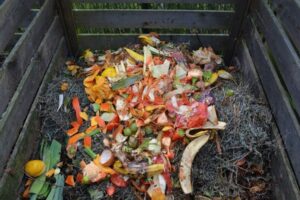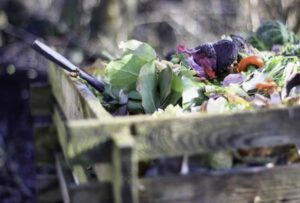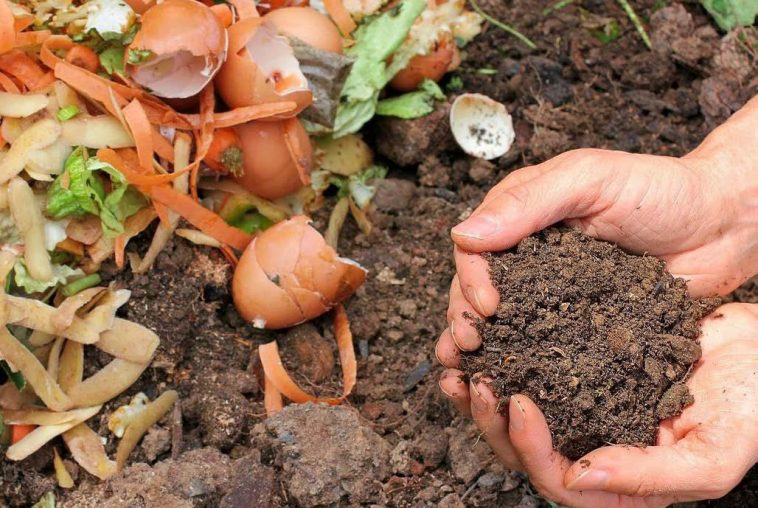A compost system can be compared to a living thing that requires the essentials of all living things: air, food, and water in a balanced combination.
Choosing the ideal location
The compost system should be based on a surface with sufficient area for drainage. It is also important to take into consideration a location that can use the nutrients that leak from the compost heap, so that the soil organcompost organisms can reach the heap easily. Water isms should be close by so that you can wet the compost heap when needed.
Wet the ground underneath the heap
If you wet the ground underneath the heap, it will prevent the soil from absorbing the moisture out of the systemheap. It will also encourage earthheap. earthworms to penetrate the heap and help worms the decomposing process.

Composting is a natural process that can increase the quality and quantity of your soil. Photo: pixabay.com
Layering in your compost system
Layer of twigs and coarse materials
At first, place a layer of twigs and coarse materials approximately 5 to 10 cm thick. This will allow air circulation at the base of the heap that ensures better aeration in the heap.
“Brown” and “green” layers
Green and brown materials with favourable proportions of carbon and nitrogen offer microorganisms a “comnitrogen complete meal”. This helps the breakdown plete of the compost.
Try to maintain a 50/50 ratio beTry between “greens” and “browns” for the correct balance of nutrients. When the heap is turned for the first time, the “browns” and “greens” will mix with each other.
Top layer
It is normally a good idea to add a thin layer (2 cm) of garden soil as a top layer. This introduces microbes to the heap so that decomposition can start as soon as possible.
Cover the heap
It’s a good policy to cover the heap to keep in moisture and to keep out rain. A black plastic bag is ideal.
Monitoring the compost heap
Heating up:
The compost heap should be heating up in a few hours’ time. The temperature can be tested by sticking your arm into the heap. Be careful as it could burn you if the heap is working efburn effectively. If the heap does not heat up, fectively. you most probably don’t have enough nitrogen or “greens” in the compost.
Maintaining moisture:
The moisture content must be mainThe maintained at 45 to 50%. The compost tained should feel like a wrung-out sponge and should contain enough water to aland almost drip when you squeeze a handful.
Turning the compost heap:
By turning your compost heap regularBy regularly, you will decrease your composting ly, time considerably; aeration increases, and all the material get exposed to the hot centre. The heap should be turned when the temperature inside starts to decrease. The season has no effect on the compost heap because it is the heaps’ centre temperature that is the crucial factor.
When is the compost ready?
The compost is ready for use as soon as the compost heap fails to heat up once more after being turned. The original ingredients of the compost heap should be hard to recognise, except for materials like straw that will not be fully decomposed. Finished compost has a dark colour with a soil structure and the smell of humus on a forest floor.
The volume of the finished compost heap will be 25 to 40% of the original compost heap. The time taken for comcompost compost to be ready depends on how often post you turned the heap if sufficient wetyou wetting occurred and if the right materials ting were used to build the heap.

Snip the materials as much as possible so that it can decompose easier. (Image: Pixabay.com)
Trouble shooting
Bad odours in the compost heap
When the compost heap has a bad odour, it contains sulphur or ammonia or both. Sulphur smells of rotten eggs and indicates that the compost heap is too wet. Ammonia odour occurs when there is too much nitrogen or “greens” in the compost heap. Both these probin problems can be solved by turning the heap lems whilst adding more dry “browns” like twigs and dry leaves to the compost heap.
Compost heap does not heat up
Either the compost heap lacks moisEither moisture or there is a nitrogen or “greens” ture shortage in the heap. Sometimes when the heap is too small, the heat also escapes without having any effect on the compost.
If the nitrogen content is too low, add high nitrogen materials such as fresh grass clippings or fruit and vegfresh vegetable peels.
Pests in the compost heap
If flies, dogs, cats, rats, and other pests are attracted to the compost heap, make sure that there are no meat, bones, dairy products, or fatty food in the heap. Bury kitchen scraps deep into the compost heap to prevent fly infestation.
Composting process takes too long
Sometimes the materials are not shredded enough and should be cut smaller. To speed up the composting, add livestock manure or mix in some topsoil.
Compost heap is too wet
If your compost heap received too much water due to poor drainage, too much rain or a lack of aeration. This problem can be solved by adding more dry “browns” and moving the compost heap to a place where drainage is sufficient. The heap can also be turned to improve aeration.
We thank the Agricultural Research Council (ARC) of South Africa for the material they provided for the readers of ProagriMedia. For more information, visit their website www.arc.agric.za.









